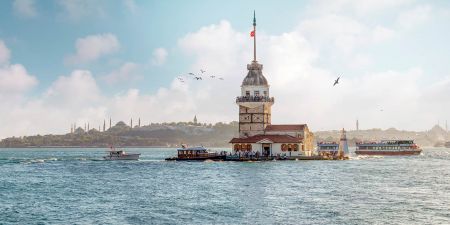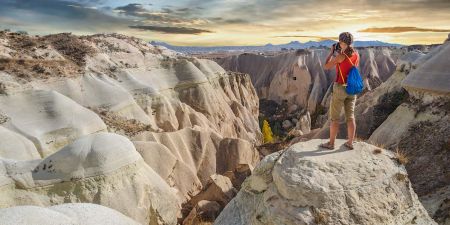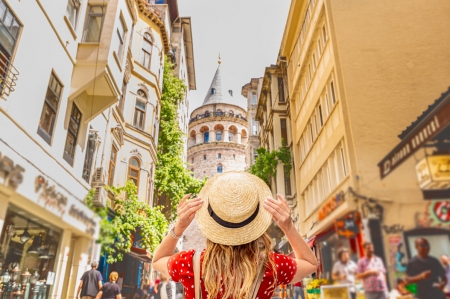-
Home
- Turkey
- Turkey Travel Information
- Museums
- Mausoleum at Halicarnassus (Tomb of Mausolus) of Turkey
Mausoleum at Halicarnassus (Tomb of Mausolus) of Turkey
The Mausoleum at Halicarnassus in Bodrum, Turkey, was a 4th-century BCE grand tomb and one of the Seven Wonders of the Ancient World. Its ruins still inspire today.
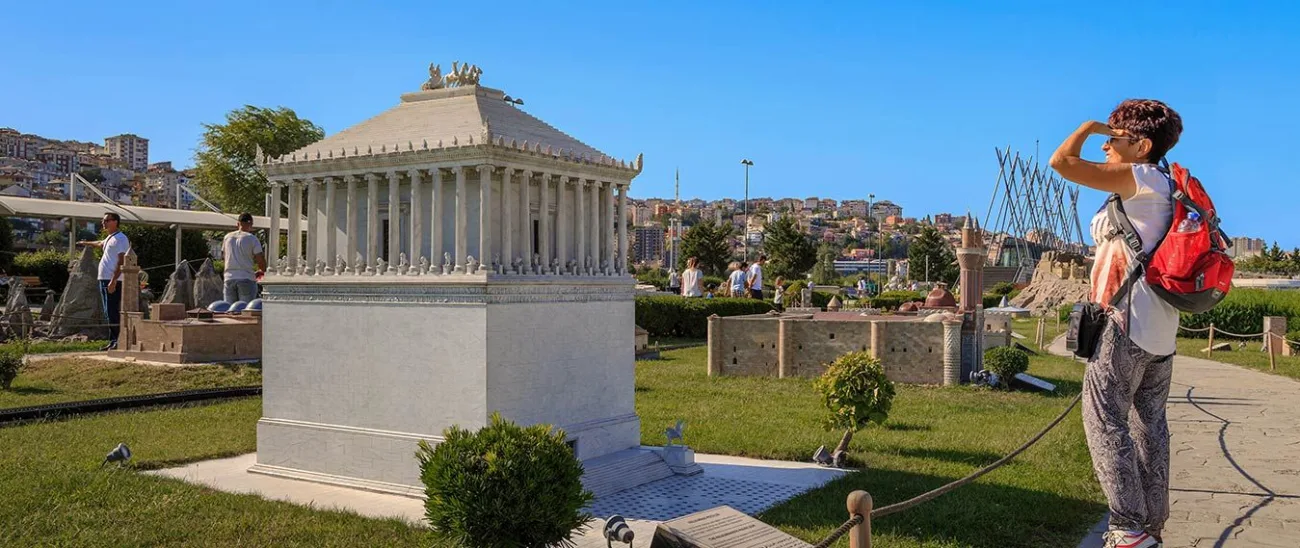
Thanks to this special ancient world wonder, a new term was added to the heritage architectural definitions. The word mausoleum which is now used as a descriptive term referring to the memorial tomb is originally derived from the name of Mausolus for whom the marble structure was built. The tradition of building the memorial tombs commemorating the death of significant characters and families.
The Mausoleum of Halicarnassus is the best to include in your Turkey Travel Package after the Great Pyramids of Giza, Egypt as the longest surviving Ancient World Wonder.

Mausolus reign and the Greek Culture recognition in Halicarnassus
By 377 BC, Mausolus father died, and then he ascended the throne to be the ruler of the Caria city in the Persian Empire for the coming 24 years. Carians who inhabited the city were herdsmen, however; Mausolus appreciated the Greek culture and encouraged the people of Caria to follow the same lifestyle. Mausolus moved the capital from Mylasa to Halicarnassus city on the coast. Many property projects were initiated during his reign for the development and expansion of the city.

The Mausoleum at Halicarnassus was built between 353 and 351 BCE as the grand tomb of Mausolus, the satrap of Caria, and his wife (and sister) Artemisia II. Inspired by the grand architecture of the time, including the Nereid Monument of Xanthos, the structure was designed by Greek architects Satyros and Pythius of Priene.
The Mausoleum stood on a stepped platform with a rectangular base, surrounded by an enclosure wall and a courtyard filled with statues of gods, legendary warriors, and animals. A grand staircase lined with stone statues led to the burial chamber, where Mausolus’ remains were placed. Atop the structure, a colossal chariot statue of Mausolus and Artemisia crowned the monument, making it one of the most extraordinary tombs of the ancient world.
Artemisia II, building the first Mausoleum
By 353 BCE, Mausolus passed away, and his sister and official wife, Artemisia II hoped to build him an eternal memorial structure to commemorate his name, that’s why; the most skillful artists were brought specially for the mission. Unfortunately, two years later, Artemisia II followed her husband in 351 BCE, before the magnificent structure she dreamed of got completed.
Heading to Bodrum, Turkey, visiting the remains of the Mausoleum at Halicarnassus, built of marble structure forming the massive tomb built for Mausolus, 350 BCE, one of the Seven Wonders of the World, the Mausoleum of Halicarnassus, the ruler of Caria, lies in the southwestern corner of Asia Minor. The mausoleum was built over a hill overlooking the whole city.

Customize Your Dream Vacation!
Get in touch with our local experts for an unforgettable journey.
Plan Your Trip
Mausolus mausoleum at Halicarnassus building Structure and Development
By comparison to several architectural elements dating back to the 15th century in Bodrum Castle, said to be taken from the mausoleum, the structure is following the Greek architects Pythius and Satyros. The decorating sculptures of the building sides, each was assigned to a different artist: Scopas, Bryaxis, Leochares, and Timotheus.
Pliny the Elder, the Roman historian is stating that the structure took a rectangular shape extended over 140 meters. The mausoleum once was standing over 36 columns, surmounted by a 24-stepped pyramidion structure and Artemisia a riding four-horse marble chariot.

The mausoleum structure was probably demolished due to an earthquake hit the city between the 11th and the 15th century. Several earthquakes said to hit the city in the 13th century, caused the damage of columns, up till the early 15th century, only the ground of the building could survive. The mausoleum is documented to have lived for over a millennium. Remains of plaster and lime were found in Bodrum castle. Once one of the Seven Wonders of the Ancient World, it remains a site of historical fascination, drawing visitors eager to explore Turkey's remarkable attractions.

By the 19th century, Charles Thomas Newton, the British Museum officer managed to discover the remnant of the mausoleum. Decorations, wall reliefs, stepped roof, the marble chariot, and two statues. All the findings were transferred to London to be displayed in the British Museum.
The Present of Mausolus mausoleum
The British Museum exhibitions embrace the sculptures fragments of the Mausoleum along with the podium, a frieze of a Greek battel, and a 3-meter-statue possibly for the ruler Mausolus. The decorations bear a representation of the battles between the Greeks and the Amazons.
In 2017, the Danish Halikarnassos Project was announced to hold the responsibility of reviving the Mausoleum of Halicarnassus, with no certain date for the restoration process.
Nowadays, the site is declared by the Culture and Tourism Ministry of Turkey as an open-air museum featuring the Ancient World Wonders.

FAQS
Q1. What is Mausoleum at Halicarnassus?
The Mausoleum at Halicarnassus was a grand tomb built for Mausolus, the ruler of Caria. Located in present-day Bodrum, Turkey, it was one of the Seven Wonders of the Ancient World.
Q2. When was Mausoleum at Halicarnassus built?
The Mausoleum at Halicarnassus was built between 353 and 351 BCE as the grand tomb of Mausolus, the satrap of Caria, and his wife (and sister), Artemisia II.
Q3. How did the Mausoleum at Halicarnassus get destroyed?
The Mausoleum at Halicarnassus was likely destroyed by a series of earthquakes between the 11th and 15th centuries, leaving only its foundation intact.
Q4. Why was the Mausoleum at Halicarnassus a wonder?
The Mausoleum at Halicarnassus was considered a wonder due to its grand scale, intricate architectural design, and elaborate sculptures crafted by renowned Greek artists, making it one of the most impressive tombs of the ancient world.
Discover our Turkey Tours and Book your trip now!
Turkish Culture and Arts
Turkey Attractions
- Halicarnassus of Turkey
- Harput of Turkey
- Iotape of Turkey
- Knidos of Turkey
- Phaselis of Turkey
- Priene of Turkey
- Smyrna in Turkey
- Stratonikeia: Where Ancient Greek and Turkish History Meet
- Alacahoyuk: Why This Ancient City is a Must-Visit
- Anavarza: The Hidden Ancient City in Turkey’s History
- Aspendos: Turkey's Ancient Theater and Timeless Legacy
- Zeugma-Zeugma City of Turkey
- Kars- Ruins of Ani of Turkey
- Archaeological Site of Perge of Turkey
- Bodrum Telmissos of turkey
- Burdur Archaeological Site of Sagalassos of Turkey
- Hattusha Open-Air Museum of Turkey
- Kalkan Turkey: A Mediterranean Jewel Along the Turkish Coast
- The Sacred Ruins of Letoon: What Most Turkey Travel Guides Do not Tell You
- The Ultimate Visitor's Guide to Laodikea: Ancient Wonders & Practical Tips
- Miletus of Turkey: A Local's Guide to an Ancient Wonder
- Myra of turkey
- Your Essential Guide to Perge!
- Discover Phokaia in Turkey: A Local's Guide to This Ancient Turkish Treasure
- Manisa-Sardis of Turkey
- Patara: Where Roman Ruins Meet Turkey's Most Beautiful Beach
- Ancient Telmessos Turkey: Your Essential Guide to This Hidden Gem
- Xanthos: The Ancient Lycian Capital of Turkey
- Unveiling the Timeless Beauty of Hierapolis!
- Antalya Termessos of Turkey
- Exploring Limyra in Turkey: A Visitor's Guide to the Ancient Lycian City
- Discover Sagalassos: The Hidden Turkish Ancient City
- Must-Visit Assos in Turkey: Where Greek History Meets Turkish Charm
- Izmir-Pergamon of Turkey
- Adıyaman Nemrut of Turkey
- Aydın Aphrodisias of Turkey
- Cappadocia-Historical Places of Turkey
- Why Beyoğlu is Istanbul's Most Charming District
- Cumalikizik in Turkey: A Living Ottoman Museum
- Damlatas Caves in Turkey: A Natural Breathing Treatment in Turkey's Heart
- Demre in Turkey
- Karain Cave in Turkey
- Uludag in Turkey
- The Princes’ Islands in Turkey
- Discover Tortum Waterfall in Turkey: Your Guide to Turkey's Natural Marvel
- Belek in Turkey
- The Truth About Kas in Turkey: More Than Just Another Beach Town
- Sirince in Turkey
- Visiting Gocek in Turkey? Here's Everything You Need to Know First
- Stunning Spots the Historical Peninsula in Turkey: Complete Guide
- Alanya in Turkey
- The Blue Mosque (Sultan Ahmed Mosque)
- Your Guide to an Authentic Turkish Bath Experience in Istanbul
- Grand Bazaar Istanbul and Spice Bazaar
- Istanbul Aquarium
- Christmas in Turkey: Tourist places and a unique experience for Christmas
Religious Sites
- Bursa Great Mosque
- St. Paul’s Church
- Eshab Kehf Cave of the Seven Sleepers
- Eyüp Sultan Mosque: A Sacred Journey in Istanbul's Heart
- Süleymaniye Mosque: Essential Guide for Istanbul Visitors
- Virgin Mary Church Turkey: A Sacred Journey Through Time
- Basilica of St. John in Ephesus: Ancient Wonder Every Visitor Must See
- Discover the Hacı Bektaş Veli Complex: A Spiritual Legacy
- Hidden Treasure: The Church of St Pierre in Turkey
- Uncovering Ahlat, Turkey: The Hidden Gem of Lake Van
- Sanli Urfa Rizvaniye Mosque And Halil Ul Rahman Lake
- The Untold Story of Van-Akdamar: Turkey's Ancient Island Monastery
- Your Ultimate Guide to Noah’s Ark in Turkey
- Sultan Bayezid II Mosque Complex: The Remarkable Story of Istanbul's First Medical Center
- Hacı Bayram Veli Complex: The Hidden Story Behind Ankara's Most Sacred Mosque
- St. Nicholas Church Antalya: Ancient Secrets Behind Santa's True Home
- The Untold Story of Seljuk Mausoleums and Tombstones in Ahlat
- The Hidden Stories Behind Bursa's Green Mosque: A Visitor's Guide
- Haci Bektas Veli: The Hidden Story Behind Cappadocia's Spiritual Master
- Visitor's Guide to Twin Minaret Medrese Erzurum -Çifte: What You Need to Know Before Going
- Eskişehir Turkey: What Makes it Special
- Ancient Wonders: Your Journey Through the Cradle of the Saints in Hatay
- St. Peters Grotto in Hatay: The Hidden Story of World's First Christian Church
- The Hidden Story of Habibi Neccar Mosque: Antakya's Oldest Islamic Sanctuary
- İsparta St Paul Basilica Turkey: Hidden Treasures of Ancient Yalvaç
- Istanbul - Holy Tourism
- Visiting Mevlana Museum in Konya: More Local Secrets You Need to Know
- Konya - Mevlana Complex
- The Lost Treasures of Sardis ( Sart ) in Turkey: A Visitor's Guide to the Ancient Lydian Capital
- Discover Deyrulzafaran Monastery: A Sacred Journey Through Mardin's History
- St. Paul Church and Well: Your Guide to Turkey's Ancient Sacred Waters
- The Lost Martyrium of St Philip: Uncovering History in Hierapolis
- Harran: Turkey’s Ancient Gateway to Science and Faith
- Siirt-Tombs of Ibrahim Hakkı Efendi and HZ.Fakirullah
- Veysel Karani Complex (Siirt-Baykan)
- Sivas - Great Mosque and Hospital of Divrigi of Turkey
- Trabzon-Maçka Sumela Monastery of Turkey
Museums
- Asclepieion Ancient City in Pergamon of Turkey
- Hatay Archeology Museum of Turkey
- Aphrodisias Museum of Turkey
- Antalya Archaeological Museum of Turkey
- Burdur Archaeology Museum of Turkey
- Denizli Hierapolis Archeology Museum: Your full guide
- Hacı Bektaş Veli Museum of Turkey
- Istanbul Galata Mawlawi House Museum of Turkey
- Rahmi M. Koc Museum of Turkey
- Miniatürk of Turkey
- The Archeology Amasya Museum of Turkey
- Iznik Ayasofya Museum of Turkey
- Alacahoyuk Historic Site and Museum of Turkey
- Istanbul Military Museum of Turkey
- Yildiz Palace Museum of Turkey
- Ataturk Congress and Ethnography Museum of Turkey
- The Museum of Anatolian Civilizations of Turkey
- Trabzon Ayasofya (Hagia Sophia) Museum of Turkey
- Didyma Historic Site of Turkey
- Miletus Historic Site of Turkey
- Assos Historic Site of Turkey
- Troia Historic Site of Turkey
- Zeugma Mosaics Museum of Turkey
- Bodrum Museum of Underwater Archaeology of Turkey
- Mausoleum at Halicarnassus (Tomb of Mausolus) of Turkey
- Derinkuyu Underground City of Turkey
- Zelve Open Air Museum of Turkey
- Pergamon Acropolis Archeological Site of Turkey
- Ephesus Archeological Museum of Turkey
- Hagia Sophia Museum of Turkey
- Istanbul Archeology Museum
- Chora Museum in Turkey
- Great Palace Mosaic Museum in Turkey
- Istanbul Topkapi Palace Museum
- Turkish and Islamic Arts Museum
- Mevlana (Rumi) Museum
- Ataturk and the War of Independence Museum
- Ankara Etnography Museum
- Hatay Archaeology Museum in Turkey
Top Destinations and Attractions
- Troy of Turkey
- Konya Attractions
- Antalya Attractions
- Bursa Attractions
- Fethiye in Turkey
- Nemrut in Turkey: Why its Giant Stone Heads Still Puzzle Historians Today
- Zeugma in Turkey
- Side in Turkey
- Sumela Monastery in Turkey
- Cesme in Turkey
- Bodrum in Turkey
- Cappadocia in Turkey
- Kusadasi in Turkey
- Marmaris in Turkey
- Dalaman in Turkey
- Pamukkale (Hierapolis) in Turkey
- Dalyan in Turkey
- Unveiling Ephesus of Turkey: A Journey Through Time's Grandest Stage
- Turkey Vacations: Everything you need to know about Turkey
Climate of Turkey
Alternative Tourism
Things to Know About Turkey
Water Sports
Outdoor Sports
Winter Sports
Explore Top attraction at Istanbul in 4 Days on Turkey Short Breaks. Visit Istanbul including the Blue Mosque, Hagia Sophia, Grand Bazaar, Topkapi Palace, Petit Hagia Sophia Mosque and More.
Enjoy Cappadocia Day Trips from Istanbul. The Famous Hot Ait Balloons, Fairy Chimneys, Avanos, Uchisar Rock-Castle and more included in your Istanbul travel with Memphis Tours.
Surf Turkey Group Tours with Splendors of Turkey in 10 Days. Visit Istanbul, Ephesus and more. Explore Major attractions like Grand Bazaar, Underground City, and more with Memphis Tours.
Experience The Delights of Turkey Tours visiting Istanbul and Cappadocia in 6 Days, Visits including The Blue Mosque, Devrent Valley, and more in your Turkey Trips with Memphis Tours.
Break Boundries of Istanbul Tours and Go beyond Turkey. Reach Asia through the Bosphorus and Explore the Rumeli Fortress, the Dolmabahçe and Beylerbeyi Palaces and more in Istanbul travel.
Explore the mysteries of The Seven Apocalyptic Churches of Revelation.
Asia Minor, known for its rich tapestry of cultures and significant historical impact.
Discover the marvels of Turkey and Greece with our immersive travel experience.
Plan Your Trip!
You Might Also Like
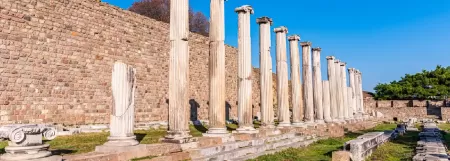
The Pergamon Asclepieion in Turkey was an ancient healing center, famous for its sacred springs and Roman medical treatments. Explore its historic ruins.
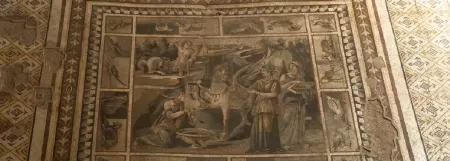
Hatay Archaeology Museum in Antakya houses Turkey’s largest Roman mosaic collection, along with artifacts from ancient civilizations.

Aphrodisias Museum in Turkey houses breathtaking ancient sculptures, Roman reliefs, and artifacts from the renowned city of Aphrodite.

Antalya Archaeological Museum showcases artifacts from Perge, Aspendos, and Termessos, featuring ancient sculptures, mosaics, and relics.

No visit to Sagalassos would be complete without a stop at the Archaeological Museum in Burdur. This museum, located just a short drive from the site, houses major discoveries from Sagalassos.

Located in one of the foremost valuable areas of the Aegean Region, Denizli Hierapolis Archeology Museum belongs to a part that has been continuously inhabited since antiquity.

Embark on a unique Cultural and Heritage tour at Haci Bektas Veli Museum, we’ll uncover the illuminating Sufi heritage that shapes Turkey’s land and history.

Explore the Galata Mawlawi House Museum, a key site in Istanbul highlighting Sufi mysticism and the Whirling Dervishes' unique history.

Step into the Rahmi M. Koç Museum in Istanbul, where industrial heritage comes to life with historic vehicles, ships, and interactive exhibits.
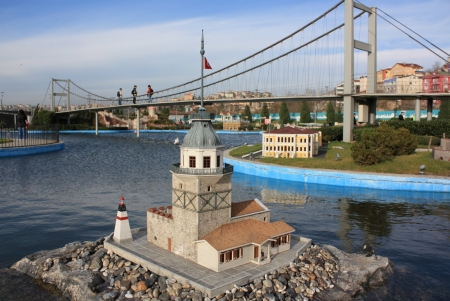
How about taking a fast tour through Turkey's major cities and sightseeing their landmarks? Located in Istanbul, Miniatürk is the world’s largest open air miniature museum
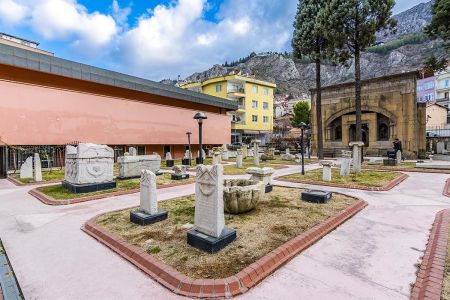
Explore Amasya Archaeological Museum, home to ancient artifacts and rare mummies from the Ilkhanid era.
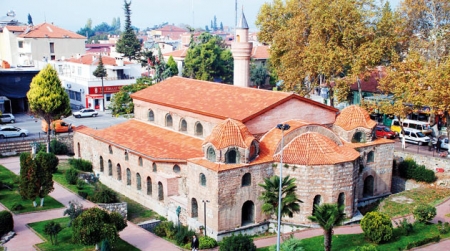
Discover Iznik Ayasofya, a historic Byzantine church-turned-mosque in Turkey, where the First Council of Nicaea once took place.

Explore Alacahoyuk Historic Site, an ancient Hittite city in Çorum with ruins, sphinx gates, and royal tombs and visit Alacahoyuk Museum to see remarkable artifacts.

Visit the Istanbul Military Museum to explore Ottoman weapons, war relics, and live Mehter Band performances in a historic setting!
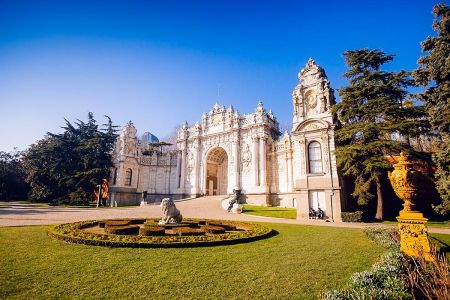
Step into Ottoman history at Yıldız Palace Museum, Istanbul’s royal complex with elegant halls, historic artifacts, and lush imperial gardens.
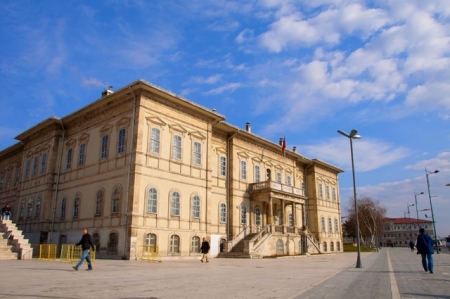
Visit Atatürk Congress & Ethnography Museum in Ankara, where Turkey’s National Struggle for Independence began in 1919. Explore its rich history!
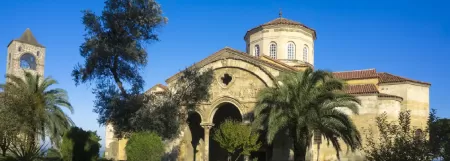
Trabzon Ayasofya Museum highlights Byzantine frescoes and rich history. Visit today to explore its stunning heritage and feel Trabzon vibes!
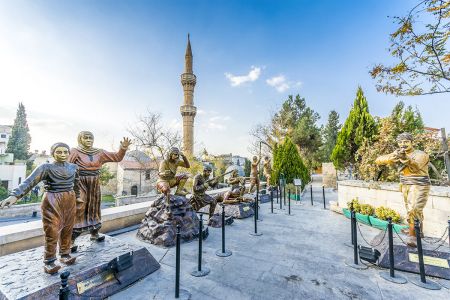
Established in Ankara, the capital of Turkey, the Museum of Anatolian Civilizations was awarded the Museum of the Year in 1997 by being chosen from among 68 museums.
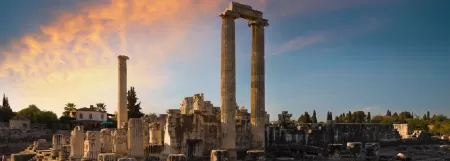
Uncover Didim, located in Aydın province, home to the ancient sanctuary of Didyma, known for the Temple and Oracle of Apollo, one of the most significant Hellenic ruins.

Visit Miletus Museum in Turkey and explore the ruins of an ancient Greek city once famed for trade, philosophy, and grand architecture!
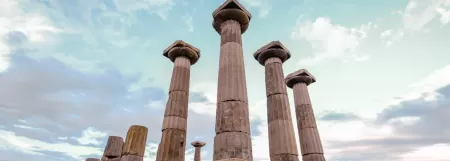
Assos Historic Site built in the 6th century BC in Çanakkale province, Assos was renowned in antiquity for its sarcophagi. Visit Assos and step into history!

Step into history at Troy, home of the legendary Trojan Horse! Uncover ancient ruins, city walls, and myths from Homer’s Iliad in Canakkale, Turkey.
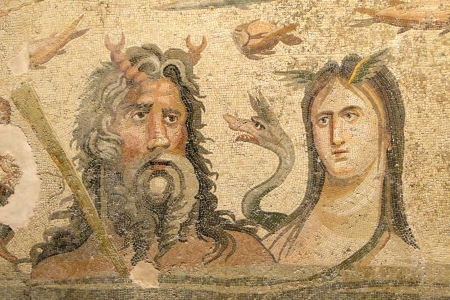
Zeugma Mosaic Museum, a treasure of ancient Roman art in Gaziantep, showcases stunning mosaics like the iconic Gypsy Girl and other breathtaking artworks.

Explore the Bodrum Museum of Underwater Archaeology, home to incredible shipwrecks, ancient artifacts, and maritime history in Turkey.

Discover the ancient Mausoleum at Halicarnassus, a masterpiece of architecture and one of the Seven Wonders.
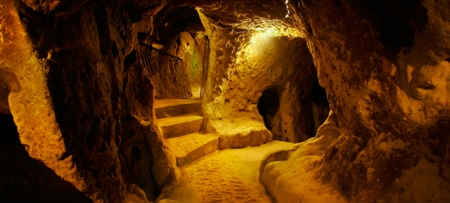
Discover the secrets of Derinkuyu Underground City in Cappadocia, a multi-level ancient wonder with tunnels, ventilation shafts, and hidden rooms.

Situated in Nevsehir province, Zelve houses the most number of the world-famous Fairy Chimneys. Zelve is an important Christian center since it is the place

Dating back to the 3rd century BC, the Acropolis in Izmir province has preserved many of its structures and works of art. Built on several levels of mounds, the ancient site of Pergamon Acropolis is extraordinarily rich

This museum in Izmir province houses the archeological finds from the site where one of the most sophisticated civilizations once thrived.

Among the best things to do in Istanbul visiting the Church, Mosque, and Museum Hagia Sophia the major attraction, The 8th Wonders of the World" of Turkey with Memphis Tours.
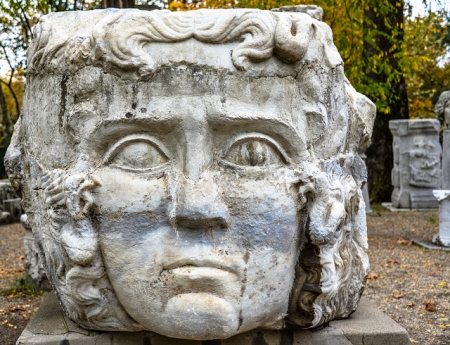
Built during the Ottoman era, the museum complex provided a background for the development of museology in Turkey. The buildings of the complex are themselves of historic significance.

This church is known to serve as the court chapel during religious ceremonies. This church carries the imprint of the typical Byzantine architecture.
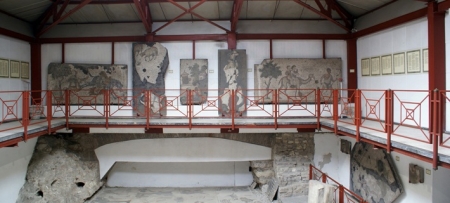
The Great Palace Mosaic Museum harbors the mosaics excavated from the courtyard of the Great Palace built during the Byzantine period.
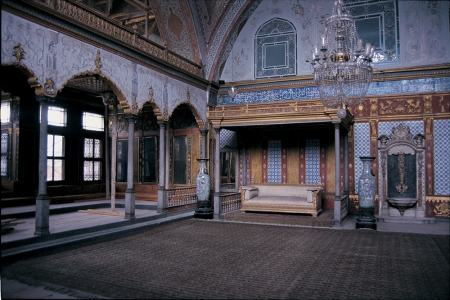
Built on a domineering point along the Bosphorus after the conquest of Istanbul, the palace is located on the tip of the historic peninsula.
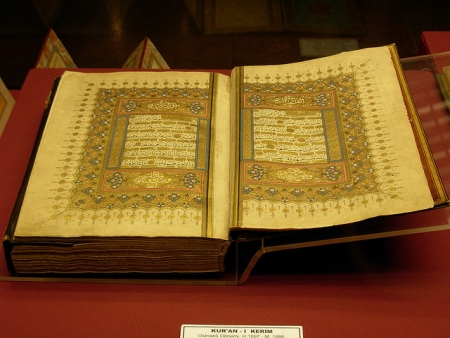
The construction of this first Turkish museum started in the 19th century within the confines of the Suleimaniye Mosque Complex.

The museum was originally a Rose Garden in the Seljuk Palace and was later presented as a gift to Rumi’s father and made a Dervish Lodge.

Opened to public in 2002, the museum is located below the Hall of Honor in Ataturk’s Mausoleum. In addition to exhibition pieces, visitors can also peek into Ataturk’s Private Library.

Built in one of the oldest neighborhoods of Ankara called Namazgah, the Ethnography Museum was also Ataturk’s first resting place for 15 years before Anıtkabir (Mausoleum).

Unique in the world with its rich collection of more than 35,000 pieces, Hatay Archeology Museum hosts the priceless mosaics known to history.

